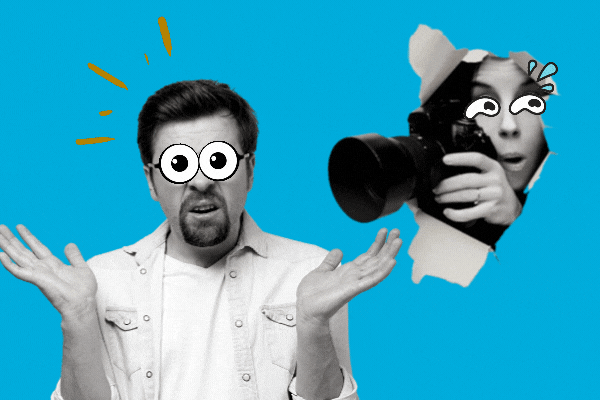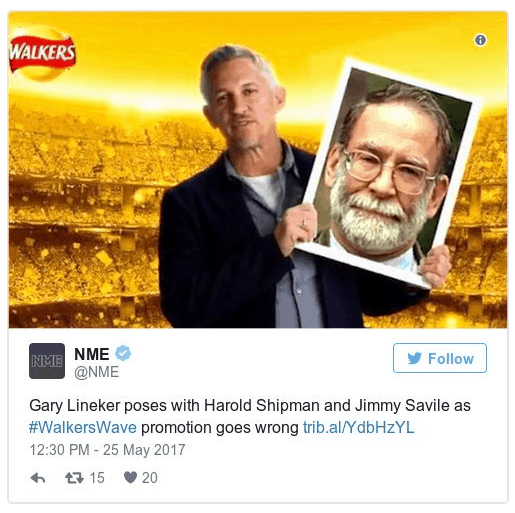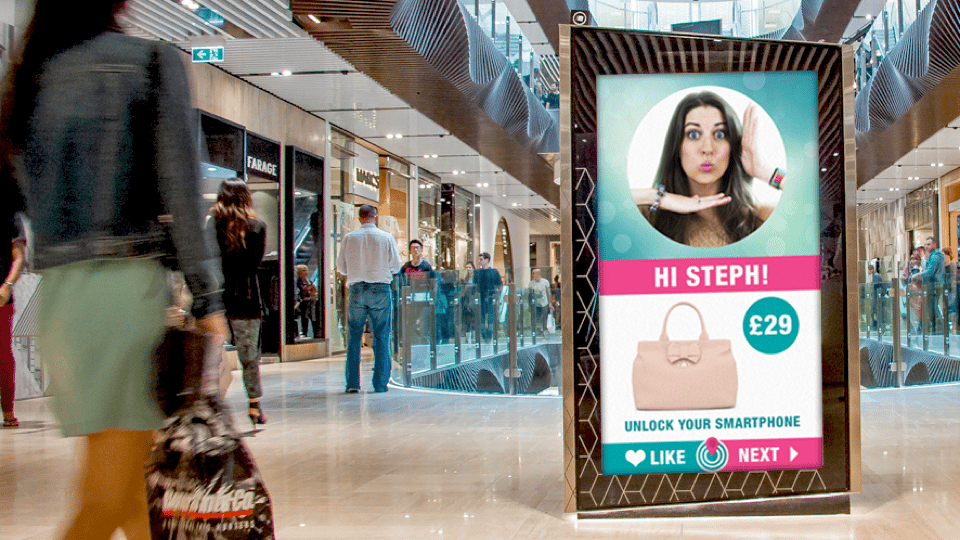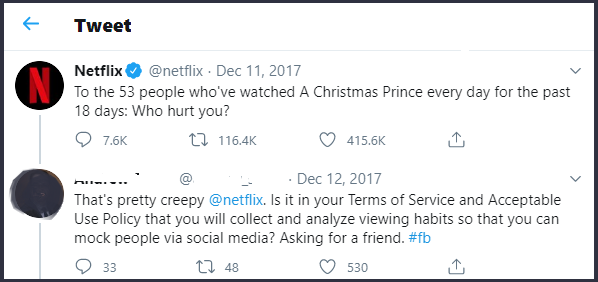The balance between personalisation and full-on creepiness is a tricky business. There are more opportunities than ever for marketers to create effective personalised campaigns that provide real, individual value. But where do the benefits end, and the creep factor set in?

Not every customer will appreciate being reminded of their every action. It reveals how much a company knows about them, their day-to-day life, and preferences.
Think about how creepy it would be to walk into a Starbucks, the barista greets you by your full name and provides you with a drink that has been algorithmically generated to be a gross collection of your favourite foods and beverages.
Then they switch the music based on your latest Spotify fixation. It's been a bad time and you've been just listening to Ed Sheeran for three days. You feel embarrassed in front of all the customers. Not ideal. Time to switch to Costa Coffee.
So, you can see how over-personalisation can be far too intense for most people. You've got to keep in mind that:
“Even when you are marketing to your entire audience or customer base, you are still simply speaking to a single human at any given time.”
In a survey by Salesforce, it was found that more than half of consumers, 52% in fact, said they were somewhat likely to switch to a different brand if their communications weren't personalised.
On top of this, 62% said they thought it was acceptable for companies to send personalised offers and discounts based on items they've already purchased. So, in a world driven by data, people expect personalisation. It's how you do it which makes all the difference.
Let's have a look at some more stats. What a treat!
- Smarter HQ claim that 72% of consumers say they only engage with personalised messaging.
- Hubspot revealed that personalised CTAs (Calls to Action) perform 202% better than generic ones.
- 70% of millennials are frustrated with brands sending them irrelevant marketing emails and prefer personalised emails over batch and blast communications.
- Smarter HQ say that millennial brand loyalty increases by 28% if they are on the receiving end of personalised communication.
- Companies using advanced personalisation report a $20 return for every $1 spent.
- 55% of marketers say the top benefit of personalization is increased visitor engagement and improved customer experience, as per Evergage.
Right then. We need to figure out:
What makes your marketing creepy?
There tends to be three factors which determine whether your marketing strategy sets off the creep-factor alarm bells.
- Data. When people provide their data to you, they expect it to be looked after. Clicking "accept all" on your website requires a level of trust that you need to keep. If you use it recklessly or even worse sell it on, you'll lose this trust. Don't use every single piece of information you've gathered, too. Yes to first name and preferences, no to really personal stuff. It's the difference between going "Hey Dave! Did you like that coffee? Wanna buy something similar?" and "Hey Dave William Smith III! Have you finally gotten away with that financial crime from 1998? Wanna do a Google search for a lawyer?"
- Timing. This is crucial. Think timing, think context. The messaging might be perfect, but if it arrives at the wrong time, it'll come across as creepy. If your customer receives a personalised communication at an odd time, they'll be annoyed at best. No one wants an advert for singles' nights during a divorce, or a push notification while they're sleeping.
- Place. Think both in terms of where on the internet they'll come across the ad, or even if you're doing some OOH adverts.
“If you’re scrolling and think, ‘Whoa, that ad is really tailored for me’—as soon as you have that metacognitive awareness, it starts to bring in a feeling of, ‘Oh, I think they’re trying to manipulate me.’”
— Jacob Teeny
So, in order to figure out what works, we've got to understand what doesn't. Let's have a look into 3 examples of companies doing personalisation in the worst way possible.
Number One: Inaccurate Personalisation and Shutterfly
Personalisation can be great. We've been through this. But if you miss both the timing and place categories as we've mentioned above, you'll be heading straight first into a PR nightmare.
But unfortunately, due to time constraints, quite a lot of personalisation (and messaging in general) is automated. This is where you've got to be careful. There's always a risk when you automate marketing personalisation without the proper safeguards in place.
This is where Shutterfly fell at the first hurdle. The company sent an email congratulating customers on the arrival of their new baby, but this managed to find its way into the inbox of people suffering from infertility. Not good.
![shutterfly]](https://www.lxahub.com/hs-fs/hubfs/shutterfly%5D.png?width=720&name=shutterfly%5D.png)
Building good relationships with your customers is about showing you understand them, and that you'll add value to their lives.
So, don't create personalisation campaigns unless you have the required data to deliver messages accurately. If you're not completely sure, or have incomplete data, don't create a hyper-specific campaign like the one above. Especially when it comes to very touchy subjects, like the example below:

Number Two: User-Generated Content and Walkers
Quite a lot of the most PR-damaging, headline-grabbing failures of personalisation recently have come from brands delving into user-generated content. It's a great way to engage your community in a fun way, and get them to be involved in their own personalised content. But when you allow people to upload anything they'd like without any verification process to block offensive content, you might see some trouble.
This is where Walker's faced a little bit of a hiccup. In their Walker's Wave campaign, they asked users to upload selfies to participate. This resulted in people sending in pictures of criminals and infamous figures. So, positioning your crisp brand alongside faces like Jimmy Saville is not a great look. And all this went viral.

Apart from the embarrassing PR nightmare, this mistake showed customers Walker's was a brand behind the times, which didn't understand the core basics of this technology, and shouldn't be trusted with personal data.
So, when you allow people to submit their own content, you need to have clear policies in place. This needs to run alongside an algorithm which can detect whether the content is vulgar, racist, or offensive. Without these, it's best to avoid a campaign that allows users to upload whatever they want, especially when it'll be featured explicitly alongside your branding.
Although, who's to say the controversy isn't the point - there's no such thing as bad publicity and all that. But maybe not the best image to have your crisp brand associated with a bunch of war criminals.
Number Three: Preferences on Display and Spotify
Customers don't tend to like their personal information being on display. Especially when that display is big, lit up, and right in the faces of everyone around them.
Take Offer Moments' digital billboards. These are designed to show ads based on customers' social media profiles, and what they're wearing as they walk down the street. It's pretty creepy.

But there's been two examples of high-profile failures in this category - Spotify and Netflix.
Both of the streaming giants ran campaigns based on the consumption of their customers, and then splashed this information on massive billboards for everyone to laugh at. Remember, this comes under the category of "trust" as we've previously mentioned.
Spotify's ads ran along the lines of “Dear person who listened to the ‘Forever Alone’ playlist for 4 hours on Valentine’s Day, you OK?”
"Maybe this user had just broken up with their girlfriend or boyfriend and was processing the feeling that maybe they would never again experience a love so pure – and you, Spotify, took it upon yourself to turn their misery into advertising fodder," says Independent journalist Kirsty Major.
Okay, maybe that's a bit of an exaggeration. But now that users would know not to trust the company with their information, damaging that relationship.
But when you think of a company doing personalisation on a large scale, and as an integral part of their business model, you think Netflix, right? How could they mess up? Well, in a similar way to Spotify - all for the risk of an advertising campaign.
Every user of the company knows they use a bunch of data to power the algorithm. It's in exchange for an effective user experience. If you watch "Love is Blind" every day, you'll want recommendations for whatever sun-soaked romantic reality competition show comes next. But they've put out some communications which have creeped out some of its loyal customers.

A Guide to Avoiding the Personalisation Trap
So, how do you avoid the over-personalisation trap? Well, the trick is not to rely on personalisation by itself. You've got to be smart with it.
That’s why Jacob Teeny, assistant professor of marketing at the Kellogg School. and colleagues—Joseph J. Siev and Richard E. Petty of the Ohio State University and Pablo Briñol of the Universidad Autónoma de Madrid—decided to review a large body of published studies on personalised matching to see what they could uncover.
So, the team have offered three top tips on how to make your personalisation effective, beyond personalisation:
- Maintain a compelling message around your product. Even if you're using excellently balanced personalisation, it's important you make sure you've got a strong message about your product.
The research shows personalisation can prompt increased “elaboration”—the amount of mental effort and engagement you put into contemplating a message. The more closely matched the message is, the more likely you are to contemplate it. This heightened attention is why personalisation works so well, according to the team. - Look for unexpected ways to use personalisation, and choose the ones which are the most important. Basic personalisation such as name, age, gender etc is the backbone of the whole deal. But looking beyond this can be a winning move. This could be the physical context or time of day, you're reaching them.
“One thing that surprised me was how matching qualities of the environment can influence you,” Jacob Teeny says. “If you’re a daytime person and you get an email during the day, you’re going to read it more carefully than if it came at night.” - Don't be creepy. This is the big one. We've been through it 1 million times. Consumers are resigned to the fact you need, and will, use their information. But they do not like it when it hits too close to home.
Consumers react poorly, studies found, when they receive messages based too closely on their transaction history or if they realise the information being used to target them was collected from another source’s website.
“Where do we draw the line? That’s a really interesting and difficult question and something that really doesn’t have a lot of regulation,
I think this is a really important topic of discussion and something that deserves further large-scale investigation.”
-Jacob Teeny
